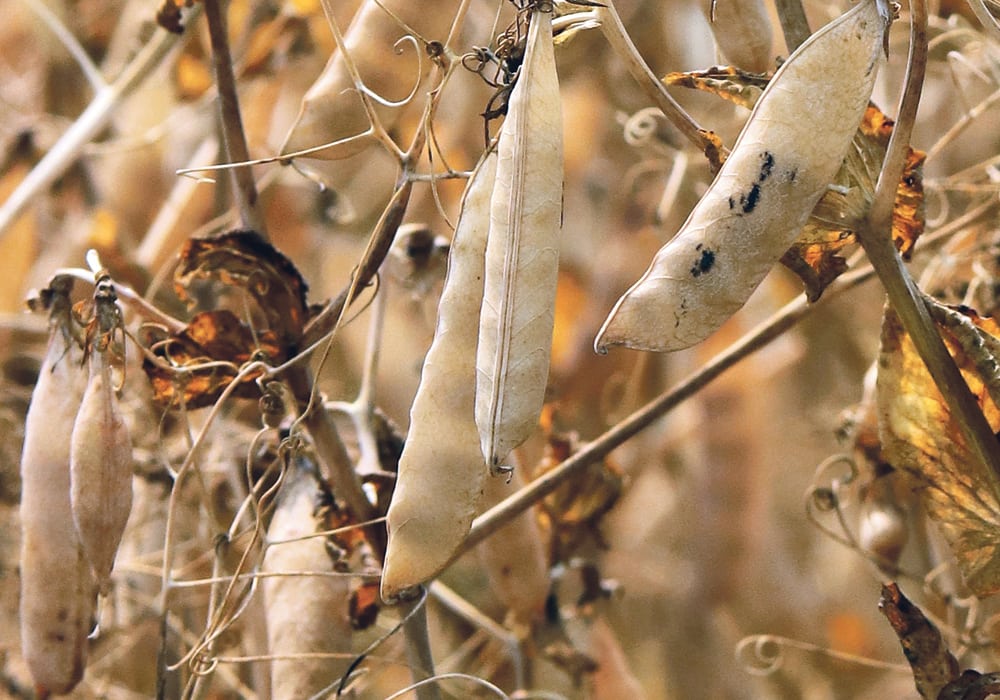Canadian yellow peas are receiving support from a different crop grown on the other side of the world.
Drought is taking a toll on Australia’s wheat crop. The United States Department of Agriculture forecasts 22 million tonnes of production, which is well below the previous five-year average of 25 million tonnes.
That has led to a firming of feed wheat prices.
Vivek Agrawal, director of JLV Agro, an Indian commodity brokerage firm, said peas are a good substitute for feed wheat.
Stronger feed wheat prices have helped arrest the decline in yellow pea prices and is leading to a recovery.
Read Also

Critical growing season is ahead for soybeans
What the weather turns out to be in the United States is going to have a significant impact on Canadian producers’ prices
Yellow peas are trading in Karachi, Pakistan, as high as US$260 per tonne, up from lows of $235 per tonne.
Agrawal said other markets, such as Nepal, have seen similar increases.
“Yellow pea prices are likely to remain firm for the next few months,” he said in an email.
Canadian yellow peas are competitive versus Black Sea peas in markets in the Indian subcontinent.
For instance, Canadian peas are trading for $250 per tonne in Karachi versus Black Sea peas at $260 per tonne. The price differential is similar in other markets.
That has pushed Black Sea yellow peas out of the Indian subcontinent. They are primarily being sold into Europe, said Vivek.
Meanwhile, Canadian peas are moving into markets like China, Nepal and Spain.
However, he said India won’t be looking for Canadian product any time soon. The Indian government is reportedly sitting on a stockpile of three million tonnes of chickpeas, which is a big deterrent to importing yellow peas.
Vivek said 150,000 tonnes of yellow peas are sitting in ports at Mumbai, Mundra and Hazira and another 50,000 tonnes in Kolkata.
He said India’s yellow pea import restrictions will likely stay in place through December. But with strong sales to other markets, Canada should be able to survive another year without purchases from its largest pea customer.
Derek Squair, president of Agri-Trend Marketing, said peas are a resilient crop because there are so many uses for them in the feed and food sectors. Protein crops are sought after.
“At the end of the day, I agree that peas will be in demand,” he said.
“We’ll find homes for it.”
Supply will ultimately determine where yellow pea prices are heading.
“We’re hearing yields all over the map, so it’s going to be tough to really nail down production,” said Squair.
Farmers in Saskatchewan had harvested 21 percent of the province’s peas as of Aug. 13. Most of the harvest was in the south of the province, where crop yields are reported to be average to well-below average.
Squair said crops look better in the northern part of the province but he doesn’t know if they will be good enough to offset the disappointing yields in the south.
Stat Publishing editor Brian Clancey said peas will do well as long as feed ingredient markets are strong.
He said pea movement has been strong in recent weeks, which means peas will be less affected by harvest-selling pressure than lentils.


















